Thursday 23rd May 2024
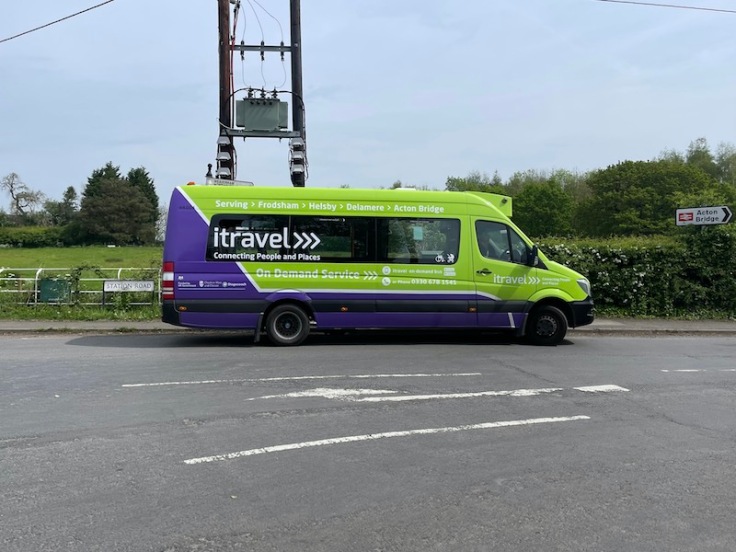
No wonder Monday’s online webinar about Cheshire West and Chester Council’s iTravel DRT scheme was promoted as a “DRT rural success story” with “strong uptake”.
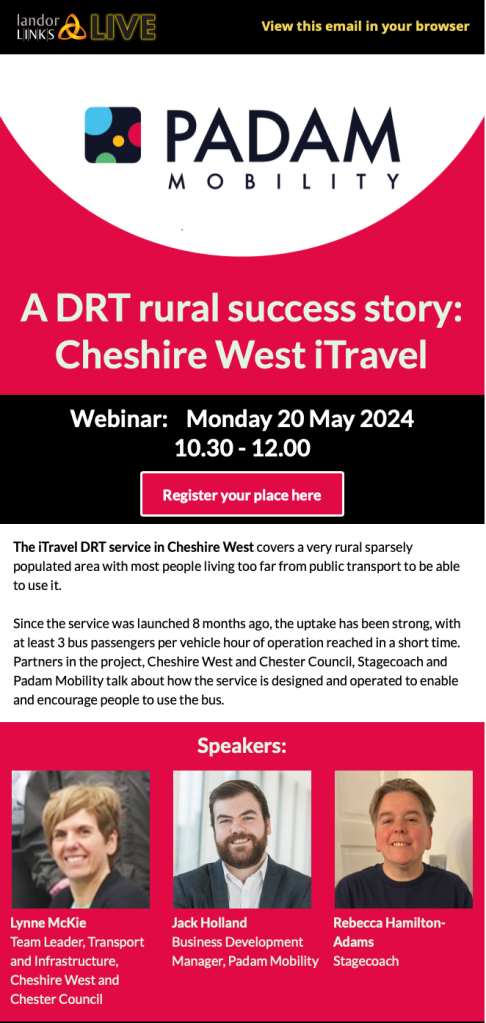
When asked what the target had been for judging success of the service (introduced at the end of July 2023), the Council’s Team Leader Transport and Infrastructure, Lynne McKie, admitted it had been hard to establish one, “the Council having no prior experience of DRT”, but with advice from PADAM Mobility (the tech software supplier for iTravel who’s name was emblazoned across the webinar promotion), it was set at 1.89 passengers per vehicle hour.
And guess what? A graph showing growing passenger take up confirmed the target had been met within the first three months of operation. A fantastic achievement and no surprise the trio of speakers from the Council, PADAM and operator, Stagecoach were pleased as punch with their success.

Some might say having a three year DfT Rural Mobility Grant totalling £1.075 million to run two minibuses for a Monday to Friday only service from 07:00 to 19:00 on which well over a third of passengers are school children travelling to and from school on peak hour journeys …… achieving less than two passengers carried an hour might not seem a particularly ambitious target but hey, who’s worried about that? When it comes to DRT, after so many failures, any target being met is worthy of a full blown celebration, even if the bar is set lower than a world record beating limbo dancer’s finale performance.

Even better, at the end of March, it was explained, the service was achieving 3.27 passengers per vehicle hour and Jack Holland from PADAM believed it was feasible to increase that even further to between 4.5 and 5 by the end of the three year pilot which could reduce the current cost of £11 per passenger journey by between £4-£5 per passenger within the current capacity of two minibuses.
Lynne explained the original plan had been to use three buses but higher operational costs had led that plan to be modified down to two but she reckoned the Council could “just about afford” an extension of the service to include Saturdays as Jack confirmed a large number of requests are made for a service that day.
Taking a look at the bar graph above shows just how important school children are to boost the numbers travelling. I seem to recall when I travelled on the service back last September the driver telling me the vehicles do a school trip as part of the schedule which obviously helps vehicle utilisation. It looks to me of the 1,600 journeys in March around 600 are “child fare paying passengers” (shown in orange). Assuming they’re going to and from school and, say, make a journey that takes around half an hour morning and afternoon on the two vehicles, that makes 1,000 passengers travelling across the rest (11 hours) of the 12 hour operating day.
There were 20 operating days in March (no service on Good Friday 29th) and 16 schooldays. That means the 1,000 non child passengers travelled over 16 schooldays x 11 hours x 2 minibuses plus 4 non-schooldays x 12 hours x 2 minibuses making for 448 operating hours which brings the passenger per vehicle hour utilisation down to 2.23.
0.34 above the target.
Most users – around 500 – are using the app to book a journey, and reflecting the dominance of school children, concessionary pass holders make up less than a quarter of passengers.
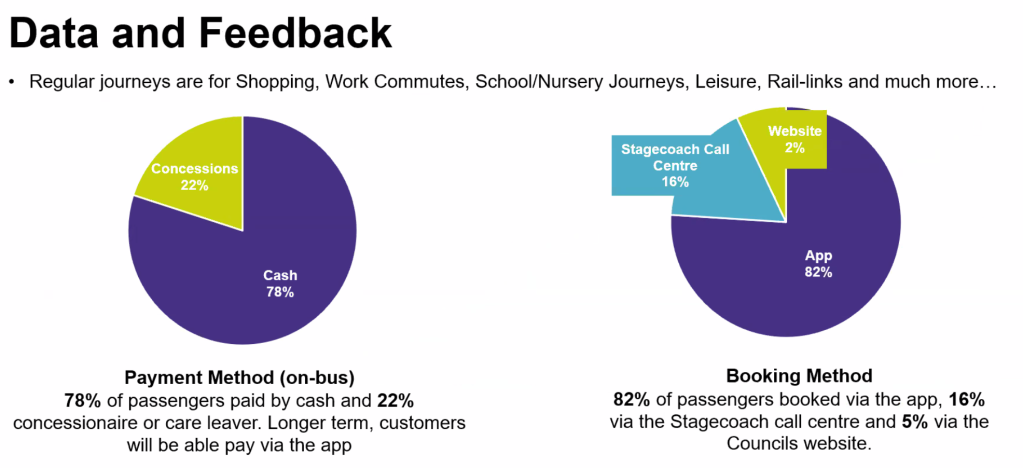
The area covered by iTravel’s two minibuses is substantial. It’s surrounded by three railway lines and seven stations, and on its north western flank, Stagecoach providing an hourly route 2 from Chester to Runcorn via Helsby and Frodsham, and Arriva an hourly route X30 from Chester via Frodsham to Warrington with D&G Bus route 48 slicing through the middle of the area between Northwich, Acton Bridge, Kingsley and Frodsham.
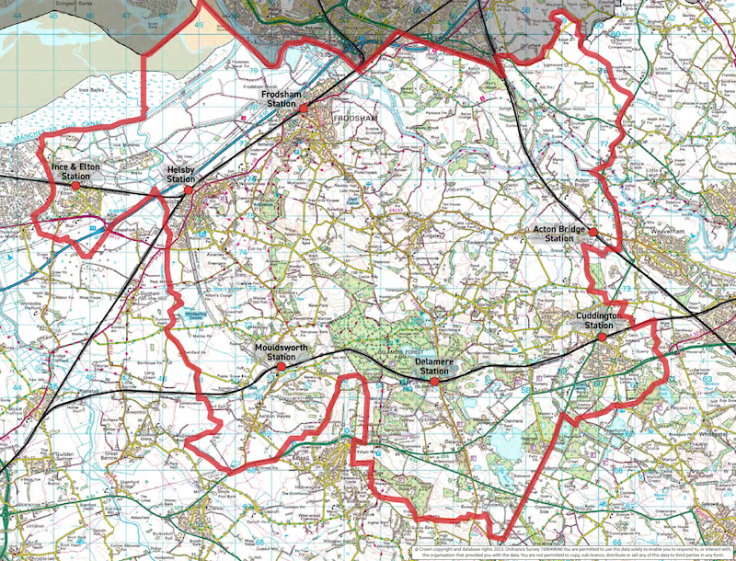
I understand this route has seen a noticeable decline in passengers since iTravel began, even though Lynne explained DRT is complimentary to existing bus routes, not competitive. I tested that out immediately after Monday’s webinar using the online booking form and requested a ride from Acton Bridge railway station (in the east of the operating area) to Kingsley (in the middle of the operating area) at 11:00 for yesterday, Wednesday, knowing there was a bus departing at 11:21 on route 48.

Back came an offer of a pick up on iTravel every 15 minutes including a departure at 11:24.

I’d call that competitive.
I couldn’t specify the destination bus stop used by the 48 in Kingsley – the Horse Shoe Inn. To remove the possibility of competition, Lynne explained such bus stops have been removed from the database, but that’s just a sleight of hand as she also stated many “virtual bus stops have been added” including the Red Bull Inn …. a matter of yards from the Horse Shoe Inn stop.
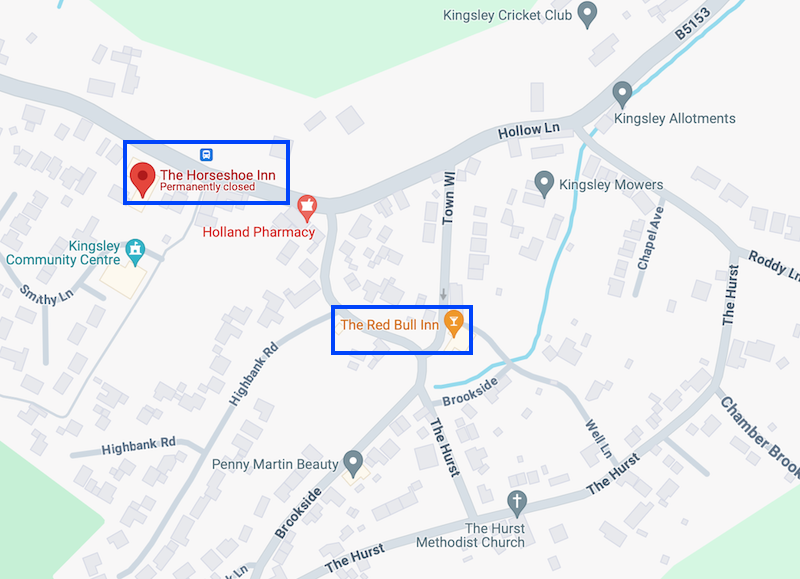
So, iTravel which carries around 1,600 passenger journeys a month funded by the DfT is competing with route 48, funded by Cheshire West and Chester Council carrying around 3,000 passenger journeys a month.
Which, interestingly, with one bus over a 12 hour day, works out at 12.5 passengers per vehicle hour.
Maybe LandorLinks could arrange a follow up webinar about that success?
As readers will know, I always like to experience services as a passenger never trusting the hype you read in the media and hear about at webinars.
I’d taken a ride on iTravel last September, a few weeks after it was introduced in July. Obviously it was early days so no surprises it was easy to book a journey a few days ahead and I was the only passenger for my 19 minute journey from Acton Bridge station over to Helsby.
Hearing about the upcoming webinar I thought I’d repeat my journey experience and see for myself how successful the route was performing, nine months after its introduction.
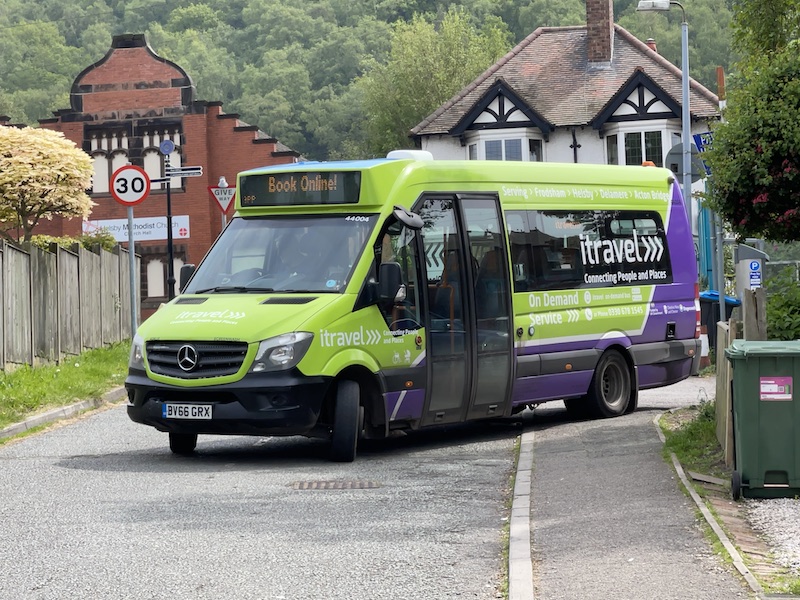
At the end of April I booked the same journey I’d taken in September from Acton Bridge railway station across the operating area to Helsby and got an offer of a midday departure which seemed ideal to connect with my scheduled train arrival into Acton Bridge station at 11:49 – seamless modal integration and all that.
Except it didn’t quite work out as the seamless integration proponents have you believe is so easy to achieve. I’ve lost count of the number of occasions car driving consultants espouse all that’s needed for public transport users is modal connections, travel nodes, transport hubs and the like which all sound great in theory, but in the real world trains run late and buses don’t wait.
At 11:51 I noted the above update on the iTravel app that the confirmed departure time had been confirmed as 12:00 – rather than the “Earliest Departure time” of 11:56.
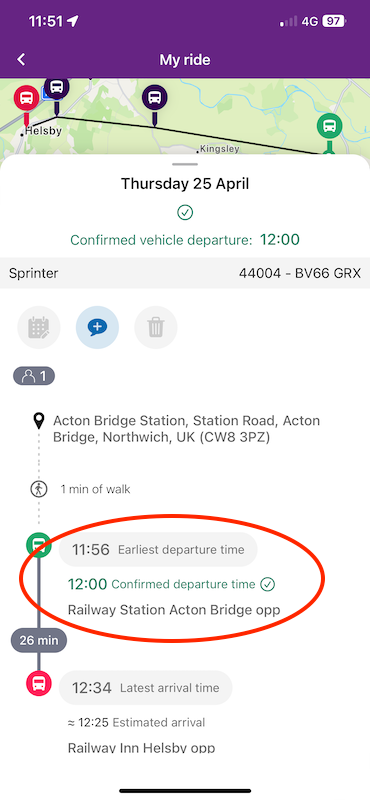
It looked like it’d be an interesting journey as I assumed the two icons meant there’d be two pick ups en route.

Except there was a problem. My train was running 14 minutes late and pulled into Acton Bridge at 12:03, just as I received an update message on my smartphone telling me my journey had been cancelled (giving the incorrect time as 11:56 instead of 12:00).
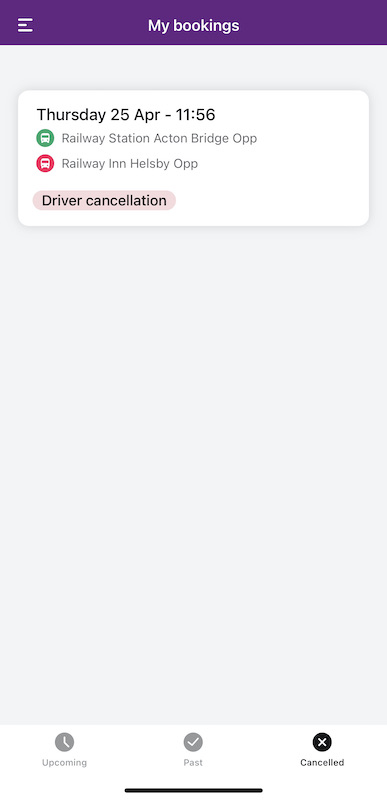
An email timed at 12:01 also dropped into my inbox…

… admonishing me for being a “no show”, one minute after departure.
And this after I’d rung the call centre at 11:51 and asked the woman who eventually answered if she’d send a message to the driver to say my train was running late but would arrive a minute or two after midday – at that time it was showing as a 12:02 arrival.
So there I was outside the somewhat basic facilities (ie none) at Acton Bridge station with no onward transport other than getting back on the train in an hour’s time or waiting for the D&G Bus route 48 at 15:26 to Frodsham.
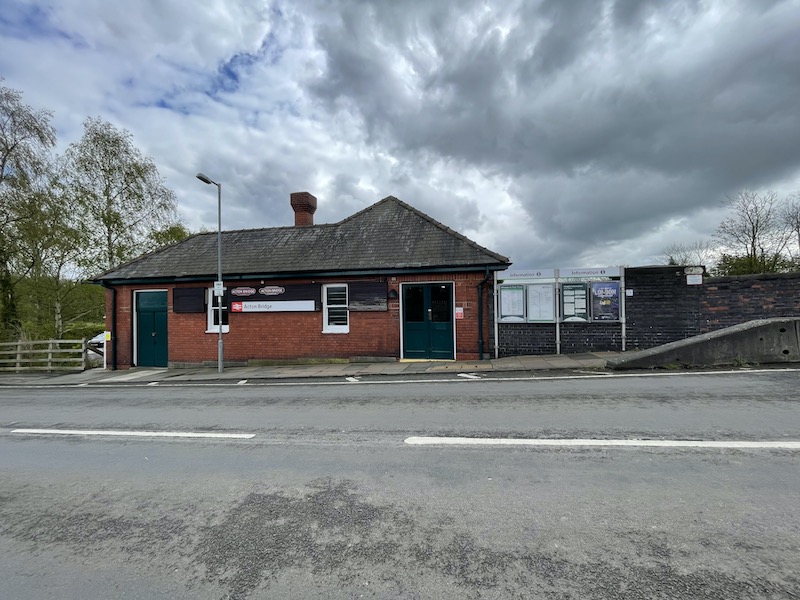
I rang the call centre back (which is based at Stagecoach’s office on Tyneside, 170 miles away) and asked why the bus hadn’t waited a couple of minutes as requested instead of leaving exactly at 12:00 to be told “the driver can’t wait past the confirmed time as there might be further pick ups on the journey”.
I asked if my message had been passed on and was told “no, it’s not possible to hold journeys to connect”.
Which raises the question just how long should a passenger allow when booking a connecting DRT journey from an incoming train?
I explained to the woman in the call centre I needed to be picked up as there was no other onward transport for some time and asked if she’d book me a journey as soon as a bus was available. After what seemed a long pause she advised “the next available time slot is twenty five past six this evening”.
It turned out there was just one bus out that day so no wonder I had a six hour wait. I made my way back down to the platform and resigned myself to waiting an hour for the next train and completely change my plans for the day.
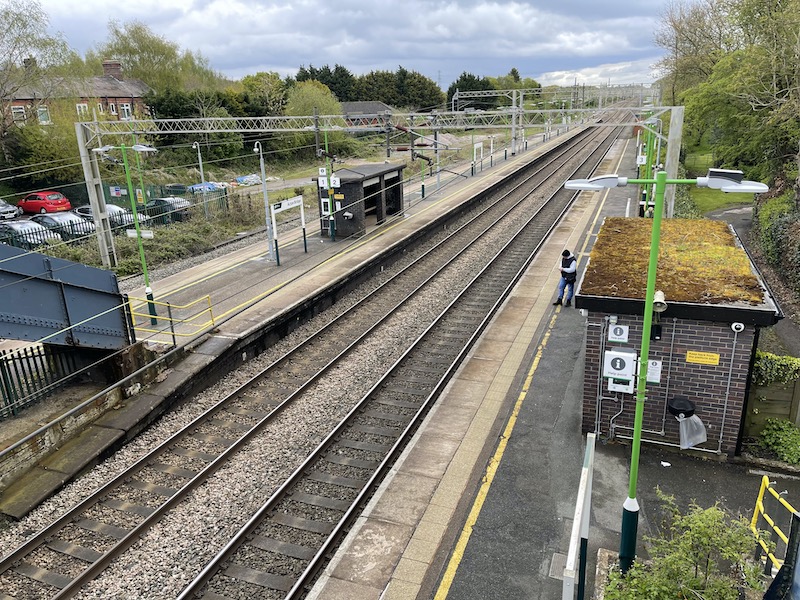
While sitting on the platform I interrogated the app to see what I could find out about availability.
Entering my desired journey and requesting a journey to “Leave now” unsurprisingly didn’t help – and note you get no indication of when “our buses” will be available.

As I’ve explained in previous blogs about the PADAM Mobility software (HertsLynx) you just have to keep playing a game of Battleships trying all different times until you manage to ‘sink a submarine’ and get an offer. I tried for a pick up at 30 minutes past each hour.

At least its something to do if you’ve got six hours to wait for a bus I suppose.
I tried a few times, but had high hopes when I put in 18:00 as the desired departure time, knowing there was a bus available at 18:25 as per the call centre in the North East.
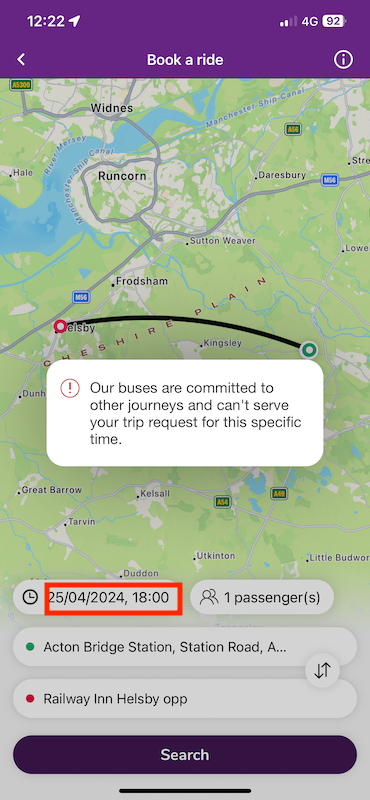
But, no nothing doing. No indication there’d be a bus available in 25 minutes. But when I entered a departure time of 18:25, back came a ride offer at….
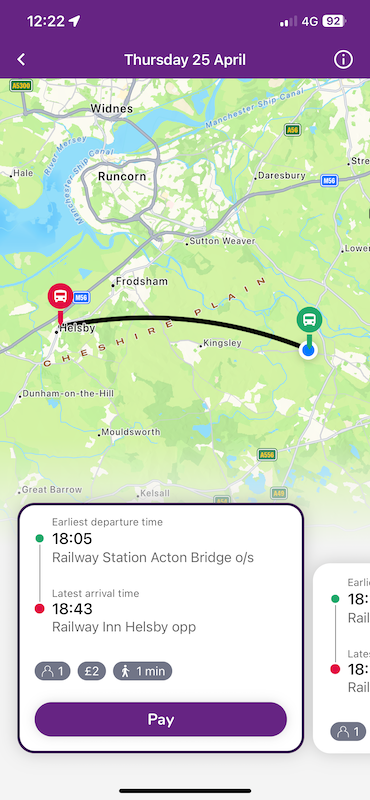
… 18:05. So why couldn’t that have been offered first off, and avoid all the faffing about, if the software knew that was the earliest a bus was available?
Furthermore why didn’t it offer me the 15:26 or 17:02 journeys on route 48 with a change at Frodsham on to the train or Stagecoach/Arriva buses?
My experience didn’t strike me as a “success” as I’d define it as a passenger rather than a ride software company, bus company or council.
I didn’t give up, and after going home and abandoning that attempt, I returned to Cheshire and after taking a look at the new Crewe bus station a couple of weeks ago, and this time booked a departure from Acton Bridge station at 12:10 to allow enough time for London NorthWestern to deliver me late and still have a chance of catching the bus – so much for seamless integrated travel – you have to allow at least 20 minutes in your schedule to hang around because a pre-booked bus designed to connect with a train arrival “can’t wait past the confirmed time as there might be further pick ups on the journey”.
Even if there aren’t.
As there weren’t on my journey on 10th May.
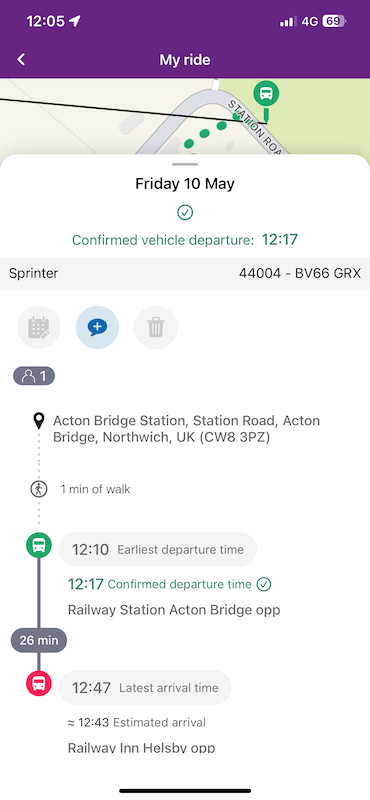
The bus arrived at an updated confirmed departure time of 12:17 and we headed over to Helsby via a lovely route taken by the driver on his own initiative as he knew it would work better than what the SatNav was offering.
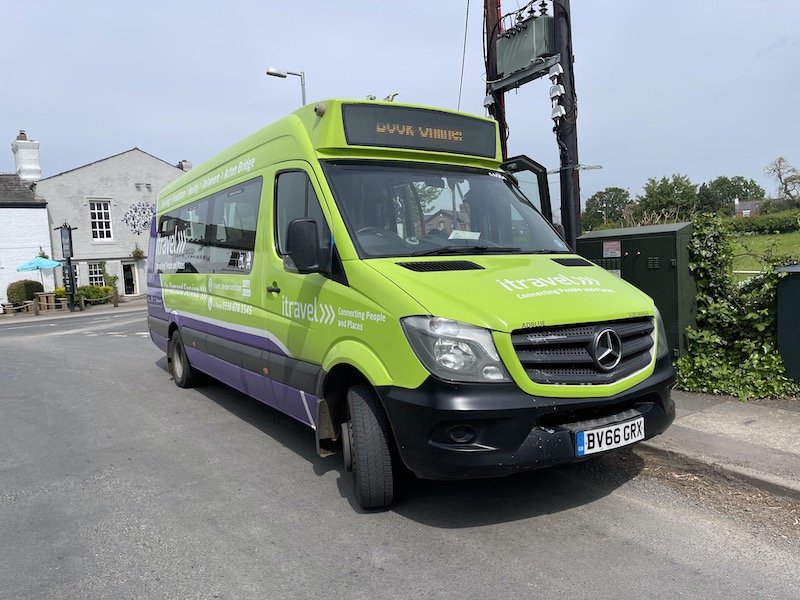
Even better, after we arrived in Helsby 20 minutes later, the friendly driver dropped me close to the entrance to Helsby station down a no-through road rather than the Railway Inn on the main road.
Which was handy, except the TfW train I’d planned to catch was running over half an hour late.
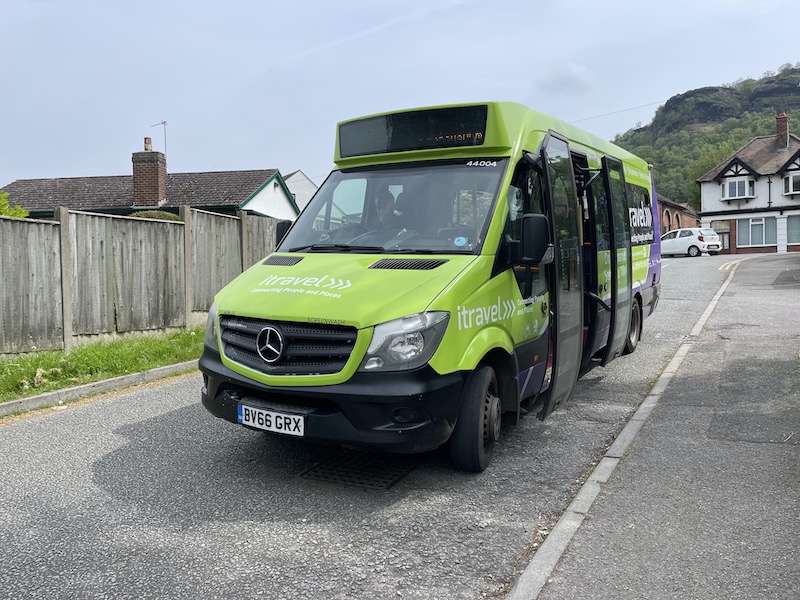
Seamless integrated travel eh?
Roger French
Blogging timetable: 06:00 TThS.
Comments on today’s blog are welcome but please keep them relevant to the blog topic, avoid personal insults and add your name (or an identifier). Thank you.

I dread having to lose our bus next April and having it replaced by a DRT system. Hampshire threatens to take of all subsidised routes on 1 April 2025.
malcolm chase, Fleet
LikeLike
Hello Malcolm. That’s not great at all, and will affect a lot of people. Do you have a formal link by any chance to minutes by Hampshire council, and their subsequent reliance on DRT (I’m sure what you are saying is totally correct, but just to get a bit more context)….
LikeLike
Details of HCC’s proposals are in their consultation document at
https://documents.hants.gov.uk/consultation/future-services-consultation-passenger-transport.pdf#page=9
As far as I can see, they aren’t specifically proposing replacing subsidised bus routes with DRT (although subsequent BSIP funding may have changed this). They seem to be relying on the affected routes continuing in a reduced, commercial form.
LikeLike
In an ideal world drivers of those DRT services should be told to wait 5 minutes after the schedule departure time as a matter of course before running empty back to base to wait for the school run in the afternoon.
LikeLike
This feels like a very expensive way of creating something that actually feels like Uber, but does not work as well.
Maybe a contract with a local taxi firm would be cheaper and more effective, given that they are used to the idiosyncrasies of bookings and waiting for people. A cost of £11 per passenger is certainly not significantly cheaper than taxi equivalents either and 3.7 passengers per hour is equivalent to a large car.
Or, I guess, the money could be used more productively in a different way. Still, this type of “innovation” builds both corporate and public sector careers. Just subsidising a conventional bus service would not generate conference opportunities and so forth. Sorry to be so cynical but I suspect it is the sad reality.
LikeLike
This is appalling customer service. Through no fault of you own, you were left stranded.
So much for a success story. Cheshire West and Chester Council should be ashamed of themselves. A clear message to other authorities considering demand responsive services – do not follow the Cheshire West model !
Peter Murnaghan
LikeLiked by 1 person
Thanks Roger for once again putting yourself through the stresses and strains of actually using DRT services to document how they generally don’t actually achieve what they are meant to. It’s just such a shame the people who design and manage them keep churning out new schemes without seemingly reading your blogs or clearly ever using them themselves. I’m saddened by the expansion of Surrey’s scheme later this year which is currently confirmed to be replacing Carlone 525, 533, 545 and 599, as well as understood to also be replacing Stagecoach 503, 520, 523 and 538, from late August. These primarily serve communities around Guildford, Godalming and Cranleigh. Villages and parts of larger towns left isolated (and in many cases not just a walk down a paved road away, but quite some distance) from any scheduled bus service, left with minibuses trying to cover a huge area of villages getting people to a town with likely lengthy dead runs between trips due to the nature of the Surrey Hills meaning lots of unavailable time wasted running empty rather than being available for booking.
LikeLike
On the seamless integrated travel I’d start with a planner that allows for train connections to be monitored in realtime and advice given. (Hopefully somebody will say that I should be using the soandso android app). My journey to the office involves 3 trains. The journey planner will show me all 3 and where to change. But when making the trip it seems each leg is monitored separately. It is nice to hear that my connecting train is running on time but that’s no help at all if my train to get there is late and the connection will be missed. I know I could keep replanning my journey, but I’d like some sort of journey companion that would know my normal route and alert me that although I’ll miss the connection I can still get there by catching a different train. Too hard, or am I just not looking in the right places?
LikeLike
To be fair, the failings of Roger’s journeys are as much due to poor performance from the rail operator, rather than the bus, but a very poor show to not wait at east the 5 minutes.
LikeLike
One simply despairs at these vanity projects of politicians naively promoting solutions by Tech companies. All this money comes from somewhere and obviously reduces the budget for operating ordinary predictable bus services.
In addition algorithm seems to be pretty flawed judging by Rogers example here), which is certainly something in the Tech companies should you get right. I suspect that this is related to the fact they have absolutely no understanding of basic transport planning principles or real world experience of the products that they foist on the public sector.
LikeLike
I don’t suppose the operator has a trial period with volunteers to test the software for flaws before the service is open to the public?
LikeLike
Welcome to the north of England, there is no way I would consider booking a DRT journey FROM a railway station as the rail service is far too unreliable, your train could be cancelled for a myriad of different reasons or simply running late like in Roger’s experience, and then you are left stranded!
I guess the only option would research alternative local taxi operators phone numbers and contact one as soon as you are aware that your train will arrive after the scheduled DRT departure, at least the Delay Repay will go some way towards the taxi fare!
Kirk Jones
Matlock
LikeLiked by 1 person
Taxi firms need to get into apps so they can clean up as these DRT schemes are a complete waste of time based on Roger’s research.
I wonder if operator’s try the same research to see if schemes actually work?
LikeLike
Apparently the operator asking it’s drivers parked outside a railway station waiting for a passenger to check the Network Rail app and see if the train is on time before driving off is asking too much.
LikeLiked by 1 person
I Can’t believe waiting 2 minutes would seriously affect other pick-ups on the route. I’m sure that the time could be made up on the journey as it is allowing 26 minutes for a 20 minute journey.
Did the first operator say that she was refusing to pass your message onto the driver? It does seem to be poor customer service. What if you had been a child?
Robert Turner
LikeLike
She led me to believe she would pass it on so I was surprised to get the text/email advising the journey was cancelled.
LikeLike
This clearly demonstrate the folly of DRT and the so called transport hubs. Hub makes hem sound impressive but in most cases at best it is a bus stop. The chance of making a reliable connection at these hubs is very hit and miss unless you allow a very excessive amount of time to make a connection. If you want to get to somewhere at a particular time you can pretty much forget it as the DRT can get diverted and take longer for the trip or at the 11th hour the departure time will be changed
LikeLike
While of course the driver of the booked bus can not continuously check messages why with the technology of today can the passenger not use the DRT app showing the booking a message that the driver can see when they arrive at the booked stop, or indeed if far enough in advance at a previous stop?
Here ‘ I am on the train. It is running late and expected to arrive at Acton Bridge at 12:02. ‘
Once at the booked stop the driver could reply e.g. ‘ I can wait until 12:06 but no later else I will be late for the next booked pickup. ‘ or even actually call the booked passenger.
J.D.
LikeLike
While I dont necessarily like the idea of a national app for DRT or indeed any public transport , for the consumer I do think it is necessary. Is it really beyond modern computers to have full integration of timetabled services and DRT ones in the modern world of GPS. Also better Buses and Taxis legislation and regulation for small vehicles under say 25 seats as one complete service standard of operator competance, financing and maintenance rather than the present day peicemeal half local authority regulated, half traffic commissioner / DVSA regulated. (And dont get me started on local authority schools contracts (though perhaps SEND requirements with passenger escorts are best left to education authorities)
Bus enthusiasts might like their big bus preferences but the reality is to provide the best value for passenger journeys that will hopefully replace a journey that would have otherwise been undertaken in a private car.
Did I ask before whatever happened to Postbuses in Rural England ?
JBC Prestatyn
LikeLike
https://www.postalmuseum.org/blog/the-story-of-the-postbus/
This page includes some information on the history of the postbuses in the UK, including the cessation of the services.
RC169
LikeLiked by 1 person
New mayor outlines bus reform plans
The newly elected West Midlands Mayor has given more detail on his plans to reform bus services in the region and revealed the extent to which public money is currently being used to subsidise the private sector.
Subsidies have been in place since buses were deregulated in 1986, but TfWM said soaring costs in fuel, parts and engineers had seen them rise sharply. But he added: “The current system isn’t sustainable. It’s not delivering for communities or businesses across the region.”
“Currently, the surpluses made by private operators are distributed to shareholders in dividends,” he said. “Under a franchise system, any operating surplus generated will be invested back into the system to improve services and keep fares down.”
There is a slight flaw in his business case. The shareholders provide working capital for the companies. No shareholders No dividends to reinvest in fact the tax payers will have to cough up
LikeLike
Another flaw in the Mayor’s argument is that under franchising, operator profit will be included in the contract price, and will still be distributed to shareholders in dividends. In fact, the dividends are likely to be more reliable (although perhaps lower on average) than the current deregulated system – as the revenue risk will have been transferred to TfWM.
If there was no profit involved for the contractors, than Metroline would not have been so keen to get into the Greater Manchester market and supplant Stagecoach from its established territory in South Manchester.
LikeLike
It is not that clear a to whether his plan is to in effect nationalize them or franchise them. As you say if franchised there will still be dividends paid out
In general as well some of her profits if any are paid out as dividend and some is retained for reinvestment
Quite how he thinks people will invest in a company if they get no return on their investment baffles me. Typically investment yields are only a few percent
If he wants to seriously improve the bus services it will need more public money going into it. There is no magic solution
Franchising will not reduce the costs by much. It will give better control of the network though
LikeLike
He uused to work for PWC.
LikeLike
Given that he’s a qualified accountant and was at PWC, I’d imagine the victorious mayoral candidate will be well versed on working capital and shareholder returns.
Rather the point is, he believes, that operators make excess profits. Certainly, there is the argument that franchising can help control the network but there is also the threat of the dead hand of centralised control. Painting bus an insipid yellow doesn’t help them avoid burgeoning congestion.
In that respect, I do commend the expansion of red routes in West Midlands.
BW2
LikeLike
Looking at the accounts of bus companies there is not much profit and many are making a loss
LikeLike
I think I have read every single one of Roger’s blogs on DRT and time and time again his attempts to travel are met with a response such as ‘Our buses are committed to other journeys and can’t serve your trip request for this specific time‘.
As far as I can recall, on no occasion has the software responded with a message such as
‘The nearest available times are 11:45 and 16:30‘,
with the earlier time being the latest option before the request and the later time the first time afterwards. This is, after all, exactly how you would use a bus timetable you were not familiar with. You know what time you want to travel, know full well there will probably not be a bus at that exact time, but want to find out what the best options are.
When you think about it, the same applies when going online to book, say, restaurant tickets, theatre tickets or a holiday. If your precise request isn’t available, alternative options are displayed for you to choose from – otherwise a potential sale would be lost.
Does anyone know why DRT software does not operate in this way ? If they did, many more trip requests would be fulfilled (although perhaps not at the initially requested time) and viability would clearly improve. It seems so obvious, there must be a good reason why not.
LikeLiked by 2 people
In general the DRT apps are pretty poor and bug ridden and not easy to use. The Councils as well are probably paying over the odds for the apps as well
With all the reviews of DRT the passenger numbers are abysmally low, Typically less than 2 passengers per trip
With DRT though if they get any passengers at all it is called a success
LikeLike
It certainly is frustrating when integrated networks do not work, and with such dreadful results. That doesn’t mean, though, that they are a bad idea. Many journeys are possible only by a combination of train and bus services – or by car. At the moment it seems as if most public transport operators only really want to offer services for people whose journey needs can easily be met with a ‘one-seat’ trip; journeys involving a connection are ‘too difficult’ to provide. Bizarrely the DRT operations you have reported on are also like this, though I should not like to guarantee that a bus on a fixed route would hold a connection either.
There are some shining beacons of integrated networks – the London Underground for one, which for over a hundred years has provided a trusted and popular means of getting from one of its stations to any of the 270 others without having to use a timetable (for most of the day); this is done by the well-known map, frequent trains and good interchanges, with large clear publicity, and through-ticketing. So it can be done, with the proviso that if you are not going to run frequent services there should be staff at interchanges/hubs who have the power to hold connections or to find and arrange alternatives when things go wrong. Of course, there is no obligation for commercial companies to go to these lengths if they think it will have a bad effect on their owners’ dividends or managers’ bonuses, but if they are seriously selling themselves as ‘customer-friendly’ they should be thinking about it. After all, as the number of car journeys shows, there is a massive market out there of trips which are not at present possible or practiable by the unintegrated public transport that for the most part we have now.
LikeLike
In my area, all the services in a town were retimed so they arrived at the bus hub at the same time and all departed at the same time, to improve interchange.
The local councillor complained that “all the buses at the same time were causing congestion and pollution”…
LikeLike
Why is the online software so useless? Because the suppliers can get away with a cheap hopeless product because the purchasers ( the local authority) have no idea what is possible and what they want. So they accept whatever rubbish the software designers cobble together.
You would have thought that when the Dft embarked on the series of DRT schemes it would have commissioned one set of booking software for all of them that actually worked. That would have improved operational performance and saved money. Far too clever for the Dft though.
When Roger did his test on the evening DRT in Hertfordshire he could not get a booking and yet clearly that evening buses had taken people somewhere and he should have been given options to join already booked trips.
LikeLiked by 1 person
The Berwickshire Pingo DRT scheme operated by Borders Buses finished at the end of its two year pilot last Sunday. It has been replaced by a more limited DRT scheme in the Duns area using an eight seat taxi and phone only bookings.
LikeLike
Clearly at least in my view in the vast majority of cases DRT simply does not work, Well at least once the funding runs out
LikeLike
Roger you are a braver man than me using intermediate stations north of Crewe served by LNWR.
Today there was cable theft at Wolverhampton, resulting in delays to Birmingham to Liverpool trains. Common practice was adopted for northbound/down trains where time was caught up by running non stop from Crewe to Liverpool Lime Street.
Recently I heard an announcement while waiting at Crewe stating “train at platform 5 now running non stop to Liverpool Lime Street passengers for above mentioned stations wait and listen for announcements”.
The return working from Liverpool then departs on time.
It keeps the bean counters with their performance statistics happy, but is cold comfort to folk at Hertford, Winsford, Acton Bridge who are left in the lurch with two hour gaps.
John Nicholas
Clutching brand new Morebus timetable!
LikeLike
And they keep on coming! Next one for Roger to try. Perhaps this one will work?
https://www.somersetlive.co.uk/news/somerset-news/new-transport-revolution-starts-somerset-9303189?int_source=amp_continue_reading&int_medium=amp&int_campaign=continue_reading_button#amp-readmore-target
Peter Brown
LikeLike
Already booked😊
LikeLike
When is the DaFT going to pull the plug on these attempts to make buses operate like über (and trains operate like airlines)?
LikeLike
Don’t rely on DaFT to do anything sensible, ….. please !
LikeLike